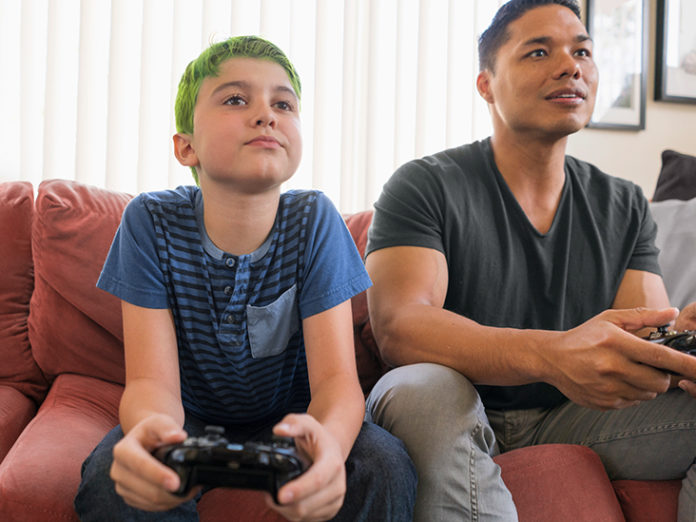
Despite conversations around gender and sexuality becoming more common and society’s attitudes becoming more accepting, it is still undeniable that LGBTQIA+ youth face a unique set of challenges growing up.
As a caregiver, it is important to create a safe, supportive, and understanding environment to allow LGBTQIA+ youth to explore their identity. Caregivers can do so by becoming informed, being respectful, aware of potential risks, and using helpful resources.
This article provides information for caregivers and discusses ways in which they can support the well-being of LGBTQIA+ youth.
Conversations around gender and sexuality contain a rapidly changing set of labels and attitudes.
There are many organizations, such as Parents, Families, and Friends of Lesbians and Gays (PFLAG) and the Trevor Project, that have resources providing information on LGBTQIA+ terms and concepts. By understanding what terms and labels mean, caregivers will have sufficient knowledge and resources to have conversations with LGBTQIA+ youth on how they identify and what words make them feel comfortable.
Caregivers can also use resources to realize and challenge any unconscious biases or stereotypes they may currently hold about LGBTQIA+ people. Even if unintentional, these views can lead to LGBTQIA+ youth feeling misunderstood and alienated.
Each LGBTQIA+ youth is different, with additional identity factors such as race, disability, religion, and socioeconomic background contributing to how they may navigate the world. LGBTQIA+ youth with intersectional identities may experience unique challenges that caregivers will have to keep in mind when researching how best to provide support.
It is important that caregivers create a supportive environment for LGBTQIA+ youth. A 2021 survey conducted by The Trevor Project shows that:
- LGBTQ youth who report having high levels of support from friends, family or a special person have a lower rate of attempted suicide than those with less support.
- LGBTQ youth with access to spaces that affirm their gender and sexuality report less attempted suicides.
- Transgender or nonbinary youth who have their pronouns respected by the people they live with have half the attempted suicide rate compared to those with pronouns not respected by others in the household.
However, the study also shows that only a third of LGBTQ youth report that their homes are an LGBTQ affirming environment.
PFLAG and
- Provide opportunities for open communication. By opening up a dialogue, caregivers can create a safe space for their child to discuss their gender and/or sexual orientation.
- Provide support. Showing support for an LGBTQIA+ youth’s identity can take many forms, such as complementing their clothing when expressing their gender identity or talking positively about LGBTQIA+ characters on television.
- Stay involved. Caregivers can demonstrate ongoing support to LGBTQIA+ youth by including them in events such as family gatherings and staying informed about their life, friends, and partners.
- Express unconditional love. It is often difficult for LGBTQIA+ youth to come out to their caregivers and so it is important that caregivers remind them that they love and accept them throughout their journey.
LGBTQIA+ youth may experience challenges due to how others react to their gender or sexual orientation. Youth can spend as much, if not more, time at school as they do at home so it is important to be aware of potential challenges LGBTQIA+ youth may face when at school. Stonewall’s School Report found:
- 45% of lesbian, gay, bisexual, and transgender pupils experienced bullying for being LGBT at school.
- 45% of those who experience bullying for being LGBT never tell anyone.
- 40% of those who experience bullying for being LGBT have skipped school because of it.
- Over half of LGBT pupils report there not being an adult at school that they can talk to about being LGBT.
- Only 1 in 5 LGBT pupils have received education on safe sex in same-sex relationships.
- 74% of white LGBT youth, 79% of LGBT youth of color, and 87% of LGBT youth with a disability report having thoughts of taking their own life.
The extra challenges that LGBTQIA+ youth face in schooling can make it harder for them to reach their academic goals, as well as affecting their mental and physical health. Considering these extra risks that LGBTQIA+ youth face, caregivers can look out for signs of bullying such as frequent absences from school, a fall in their grades, or participating in risky activities such as drug use.
Caregivers and parents can help ensure that schools are creating a safe environment for LGBTQIA+ youth by remaining in close contact with teachers, pushing for supportive measures such as the creation of a Gay-Straight Alliance (GSA) and being vocal about any issues that should be changed.
A
However, systemic biases may make seeking medical treatment and support more difficult. Surveys from both Stonewall and the Trevor Project found:
- 48% of LGBTQ youth who wanted to see a professional for their mental health could not receive it.
- 1 in 8 people have gone through unequal treatment from healthcare staff due to being LGBT.
- 1 in 5 LGBT people do not disclose their sexual orientation when seeking healthcare.
- 1 in 7 LGBT people, due to fear of discrimination, have avoided seeking treatment.
To minimize these challenges, caregivers can attempt:
- searching for medical practices that prioritize making their services accessible for LGBTQIA+ people
- being present in medical appointments and speaking out against the use of any noninclusive or harmful language
- ensuring medical professionals are correctly using the LGBTQIA+ youth’s pronouns
- when possible, encouraging the use of support from mental health professionals
Ultimately, it is crucial for caregivers to challenge harmful behavior and language whenever possible, whether that comes from schools, medical professionals, or family members.
Coming to terms with identity is a journey that may not be linear. Additional factors such as race, religion, and disability may impact an LGBTQIA+ youth’s decision as to when to come out.
It is important for caregivers to respect LGBTQIA+ youth’s wishes in regard to the disclosure of their identity. Communication with caregivers is vital for LGBTQIA+ youths’ development, but it is important that caregivers do not force their child to come out, or out them to others before they are ready.
When LGBTQIA+ youth come out, it is a journey for caregivers as well as for the LGBTQIA+ youth themselves. PFLAG list some important factors for caregivers to keep in mind:
- Caregivers are not alone. 80% of people in the United States personally know someone who is LGB and 1 in 3 know someone who is transgender. There are many organizations that exist to support and connect caregivers of LGBTQIA+ youth.
- A caregiver’s reaction is valid. There is no one way to react to an LGBTQIA+ youth coming out. Caregivers’ reactions may range from being happy that their child has opened up to them, to denial that their child is LGBTQIA+. It is important that caregivers take time to address their reactions.
- Self-care is important. Self-care is crucial to being able to provide the best support for loved ones. Caregivers can utilize resources such as PFLAG to find safe spaces to discuss their feelings during their journey with others going through similar experiences.
Caregivers and LGBTQIA+ youth may also be able to seek help online via several organizations that provide support and advice. These may include:
By staying informed, creating a supportive environment, minimizing potential risks, and respecting confidentiality, caregivers can support LGBTQIA+ youth throughout their journey and help to ensure their well-being.
Although caregivers may feel overwhelmed and experience a variety of emotions, ultimately, the process of responding to an LGBTQIA+ youth’s gender or sexual orientation as an opportunity to bring LGBTQIA+ youth and caregivers closer together.








